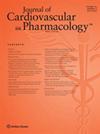Atrial hiPSC-CM as a pharmacological model to evaluate anti-AF drugs: Some lessons from IKur.
IF 2.2
4区 医学
Q2 CARDIAC & CARDIOVASCULAR SYSTEMS
引用次数: 0
Abstract
Human induced pluripotent stem cells (hiPSC) and atrial hiPSC-derived cardiomyocytes (hiPSC-CM) have entered the arena of preclinical AF research. A central question is whether they reproduce the physiological contribution of atrial selective potassium currents (such as the ultrarapid potassium current, IKur) to repolarization. Of note, two studies in single atrial hiPSC-CM reported prolongation of action potential duration by IKur block indicating that IKur might in fact represent a valuable target for the treatment of human AF. However, the results and interpretation are at odds with the literature on IKur block in human atria and the results of clinical studies. We believe that the discrepancies indicate that experiments in single atrial CM (both adult atrial CM and atrial hiPSC-CM) might be misleading. Under particular experimental conditions, atrial hiPSC-CMs may not closely resemble the electrophysiology of the human atrium. Therefore, we recapitulate here methodological issues evaluating potential value of the IKur as an antiarrhythmic target when investigated in animal models, in human atrial tissues and finally in atrial hiPSC-CM.将心房 hiPSC-CM 作为评估抗心房颤动药物的药理学模型:IKur 的一些经验
人类诱导多能干细胞(hiPSC)和心房 hiPSC 衍生心肌细胞(hiPSC-CM)已进入临床前房颤研究领域。一个核心问题是它们是否能再现心房选择性钾电流(如超快速钾电流IKur)对复极化的生理贡献。值得注意的是,有两项针对单心房 hiPSC-CM 的研究报告称,IKur 阻断可延长动作电位持续时间,这表明 IKur 实际上可能是治疗人类房颤的一个有价值的靶点。然而,这些结果和解释与有关人类心房 IKur 阻滞的文献和临床研究结果不一致。我们认为,这些差异表明,在单个心房 CM(包括成人心房 CM 和心房 hiPSC-CM)中进行的实验可能会产生误导。在特定的实验条件下,心房 hiPSC-CM 可能与人类心房的电生理学并不十分相似。因此,我们在此概述了评估 IKur 作为抗心律失常靶点在动物模型、人类心房组织和心房 hiPSC-CM 中的潜在价值的方法学问题。
本文章由计算机程序翻译,如有差异,请以英文原文为准。
求助全文
约1分钟内获得全文
求助全文
来源期刊
CiteScore
5.10
自引率
3.30%
发文量
367
审稿时长
1 months
期刊介绍:
Journal of Cardiovascular Pharmacology is a peer reviewed, multidisciplinary journal that publishes original articles and pertinent review articles on basic and clinical aspects of cardiovascular pharmacology. The Journal encourages submission in all aspects of cardiovascular pharmacology/medicine including, but not limited to: stroke, kidney disease, lipid disorders, diabetes, systemic and pulmonary hypertension, cancer angiogenesis, neural and hormonal control of the circulation, sepsis, neurodegenerative diseases with a vascular component, cardiac and vascular remodeling, heart failure, angina, anticoagulants/antiplatelet agents, drugs/agents that affect vascular smooth muscle, and arrhythmias.
Appropriate subjects include new drug development and evaluation, physiological and pharmacological bases of drug action, metabolism, drug interactions and side effects, application of drugs to gain novel insights into physiology or pathological conditions, clinical results with new and established agents, and novel methods. The focus is on pharmacology in its broadest applications, incorporating not only traditional approaches, but new approaches to the development of pharmacological agents and the prevention and treatment of cardiovascular diseases. Please note that JCVP does not publish work based on biological extracts of mixed and uncertain chemical composition or unknown concentration.

 求助内容:
求助内容: 应助结果提醒方式:
应助结果提醒方式:


